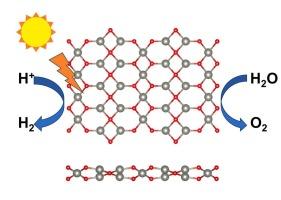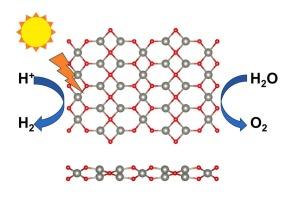增强光催化析氢性能的新型二维ZnO材料
IF 6.9
2区 材料科学
Q2 CHEMISTRY, PHYSICAL
引用次数: 0
摘要
开发高效光催化剂对于应对能源和环境挑战至关重要。二维(2D)材料在这方面具有独特的优势,如大表面积和可调电子特性,可提高光催化性能。然而,目前的二维氧化锌材料,如类石墨烯氧化锌(g-ZnO),对太阳光的吸收有限,对氢进化反应(HER)的催化活性也不高。在本研究中,我们基于密度泛函理论计算预测了两种稳定的新型二维氧化锌单层材料,分别命名为 SOD-110 和 SOD-111。SOD-110 在带隙宽度、光吸收和吉布斯自由能指标方面均优于 g-ZnO。此外,元素周期表中同族元素的替代掺杂可进一步调整 SOD-110 的性能,以满足实际光催化要求。在各种掺杂结构中,掺杂 Te 的 SOD-110 具有接近理想值(0.01 eV)的 HER 吉布斯自由能和更高的太阳能转化为氢气的效率(11.77%),是一种极具潜力的二维氧化锌基光催化剂。本文章由计算机程序翻译,如有差异,请以英文原文为准。


Novel two-dimensional ZnO materials for enhanced photocatalytic hydrogen evolution performance
Developing efficient photocatalysts is crucial for addressing energy and environmental challenges. Two-dimensional (2D) materials have unique advantages in this regard, such as large surface area and tunable electronic properties, which can enhance photocatalytic performance. However, current 2D ZnO materials, such as graphene-like ZnO (g-ZnO), exhibit limited solar light absorption and inefficient catalytic activity for the hydrogen evolution reaction (HER). In this study, we predict two stable novel 2D ZnO monolayer materials, named SOD-110 and SOD-111, based on density functional theory calculations. SOD-110 outperforms g-ZnO in terms of bandgap width, light absorption, and Gibbs free energy metrics. Moreover, the substitution doping of elements from the same-group in the periodic table can further adjust the performance of SOD-110 to meet practical photocatalytic requirements. Among the doped structures, Te-doped SOD-110 with its near-ideal value (0.01 eV) of Gibbs free energy for HER and higher solar-to-hydrogen efficiency (11.77 %), emerges as a highly promising 2D ZnO-based photocatalyst.
求助全文
通过发布文献求助,成功后即可免费获取论文全文。
去求助
来源期刊

Applied Surface Science
工程技术-材料科学:膜
CiteScore
12.50
自引率
7.50%
发文量
3393
审稿时长
67 days
期刊介绍:
Applied Surface Science covers topics contributing to a better understanding of surfaces, interfaces, nanostructures and their applications. The journal is concerned with scientific research on the atomic and molecular level of material properties determined with specific surface analytical techniques and/or computational methods, as well as the processing of such structures.
 求助内容:
求助内容: 应助结果提醒方式:
应助结果提醒方式:


